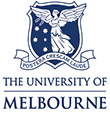Selecting candidate Neisseria gonorrhoeae strains for oropharyngeal gonorrhoea human challenge: a genomics-based analysis of clinical isolates
Authors:
- Williams, Eloise
- Low, Soo Jen
- Pollock, Georgina L
- Taouk, Mona L
- Prestedge, Jacqueline
- Howden, Benjamin P
- Chow, Eric P F
- Fairley, Christopher K
- Seib, Kate L
- McCarthy, James S
- Pasricha, Shivani
- Williamson, Deborah A
Details:
The Lancet Microbe, Volume 6, Issue 9, 2025-09-30
Article Link: Click here
Background Neisseria gonorrhoeae is a human pathogen of major public health importance due to its increasing global prevalence and antimicrobial resistance (AMR). Evidence suggests that oropharyngeal infection plays a key role in N gonorrhoeae transmission and AMR; however, our understanding of oropharyngeal gonorrhoea pathogenesis is poor. A controlled human infection model (CHIM) for oropharyngeal gonorrhoea will improve understanding of infection and accelerate urgently needed novel gonorrhoea prevention and therapeutic strategies. As the first step in the development of this CHIM, we describe a systematic approach to CHIM strain selection that leverages genomics and clinical data. Methods In this genomics-based analysis, we applied a systematic N gonorrhoeae challenge strain selection strategy incorporating genomic and clinical data to a primary dataset of clinical isolates of N gonorrhoeae collected from adult patients in Victoria, Australia, between Jan 1 and Dec 31, 2017, and July 1, 2019, and June 30, 2021. This selection strategy used clinical, phenotypic, and genomic characteristics to define a set of eight criteria that aimed to ensure the contemporary global clinical relevance of the candidate strains; select strains that would be applicable for the assessment of current and future gonorrhoea vaccines; and maximise participant safety by reducing the risk of disseminated gonococcal infection and clinically significant AMR. We applied these criteria to our primary dataset to generate a panel of potential challenge strains. From this final dataset of potential challenge strains, we predetermined that we would select up to ten isolates to proceed to the next stage of detailed phenotypic characterisation for final N gonorrhoeae CHIM strain selection. Findings 5881 isolates comprised the primary dataset. After application of the selection criteria, most of the isolates (5795 [98·6%] of 5881) were excluded, mostly due to having clinically significant AMR and poor contemporary global clinical relevance. The remaining 86 N gonorrhoeae challenge strain candidates comprised five multilocus sequence types and six N gonorrhoeae multiantigen sequence types, many of which were represented by a single isolate. Of these 86 strains, five isolates were selected to maximise coverage of the phylogenetically distinct groups within the 86 candidate challenge strains and ensure representation of strains collected from various anatomical sites. Interpretation We transparently describe a novel, systematic, and rational genomics-based strategy for oropharyngeal gonorrhoea CHIM strain selection that improves the efficiency and transparency of CHIM strain selection and enables identification of contemporary and clinically relevant potential challenge strains. A final N gonorrhoeae challenge strain will be selected from the subset of five shortlisted candidates after detailed phenotypic assessment. Funding Medical Research Future Fund, Australian National Health and Medical Research Council and Australian Government Research Training Program.


